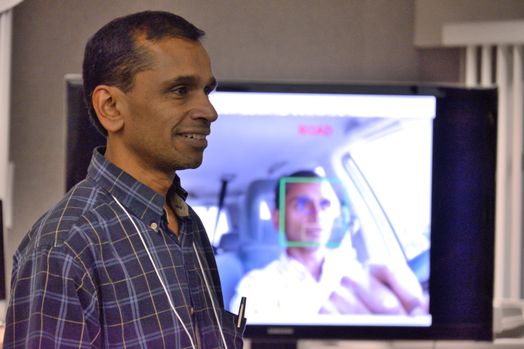 Mobile technology that turns your smartphone into a driving coach and imaging technology that can detect texting drivers among innovations shown at international conference
Mobile technology that turns your smartphone into a driving coach and imaging technology that can detect texting drivers among innovations shown at international conference
Twenty leading computer vision and imaging scientists from Xerox (NYSE: XRX) will join their peers from Google, Facebook, Microsoft Research, Amazon and many of the world's top academic institutions later this month to share their research on making computers more "human like," mimicking how the brain sees and thinks.
Steadily closing the gap between reality and Hollywood depictions of artificial intelligence, the annual IEEE Computer Vision/Pattern Recognition Conference set for June 23-28 in Columbus, Ohio, draws top scientists worldwide working on ways to advance computer vision, a field that empowers machines to "see" and make sense of the world, augmenting and often exceeding human capabilities.
"Xerox has firsthand knowledge of business processes across many industries, and is a pioneer in teaching computers to extract meaningful and actionable analytics from images and video," said Raja Bala, a Xerox principal scientist in Webster, N.Y. "Although there's been significant progress in recent years, a number of scientific challenges remain to be resolved."
Xerox research presented at this year's conference includes:
Detecting cell phone use by highway drivers
Motivated by its impact on public safety and property, several state and federal government organizations prohibit cell phone use while driving. Xerox scientists are working on a camera system for highways that uses pattern recognition technology to detect if a driver is using a cell phone.
Turning smartphones into a personal driving coach
Researchers in Webster are also working on a computer vision project that would turn smartphones into driving assistants. Using facial feature detection technology the phone would estimate a driver's gaze direction, and detect if a driver is distracted and not paying attention to the road.
Making images more eye catching
Researchers from both Xerox in Europe and at Harvard University are studying what attracts people's attention first when they look at a picture. Understanding that eye-catching element enables visuals to be composed for greater effect and can predict where people will look when facing a scene, a photo or game.
Making sense of big data in computer vision – image signatures
Images and video make up 90 percent of today's Internet traffic. To explore and use this massive amount of data requires technology that can automatically analyze an image and create a unique 'visual signature' that distinguishes it from other images. The Xerox Research Centre Europe (XRCE) has invented a patented state-of-the-art methodology that creates such signatures in an extremely compact and robust fashion, beating current deep learning methods for such challenging image classification problems as recognizing the brand and model of a car.
Pigeon or dove? Designing 'gold' questions in complex crowdsourcing tasks
Crowdsourcing is frequently used as a forum to find individuals to label images but presents challenges when specific subject matter experts are required (such as ornithologists to identify species of birds), since such experts are rarely available on crowdsourcing platforms. To assist non-expert annotators, the Xerox research centers in Europe and India have designed a system that can do a first filter to propose a very limited number of categories to choose from. The system automatically includes 'gold' questions to identify untrustworthy annotators and ensure the quality of labeling.
Xerox's leadership in computer vision
Xerox conducts computer vision research at its centers in New York and France. The Xerox Innovation Group also collaborates with the world's top academic institutions including the University of Oxford, Harvard University, the French National Institute for Research in Computer Science (INRIA), the Massachusetts Institute of Technology, Carnegie Mellon, the University of Illinois at Urbana-Champaign, Penn State University, Notre Dame and University of Maryland.
www.xerox.com




























































































